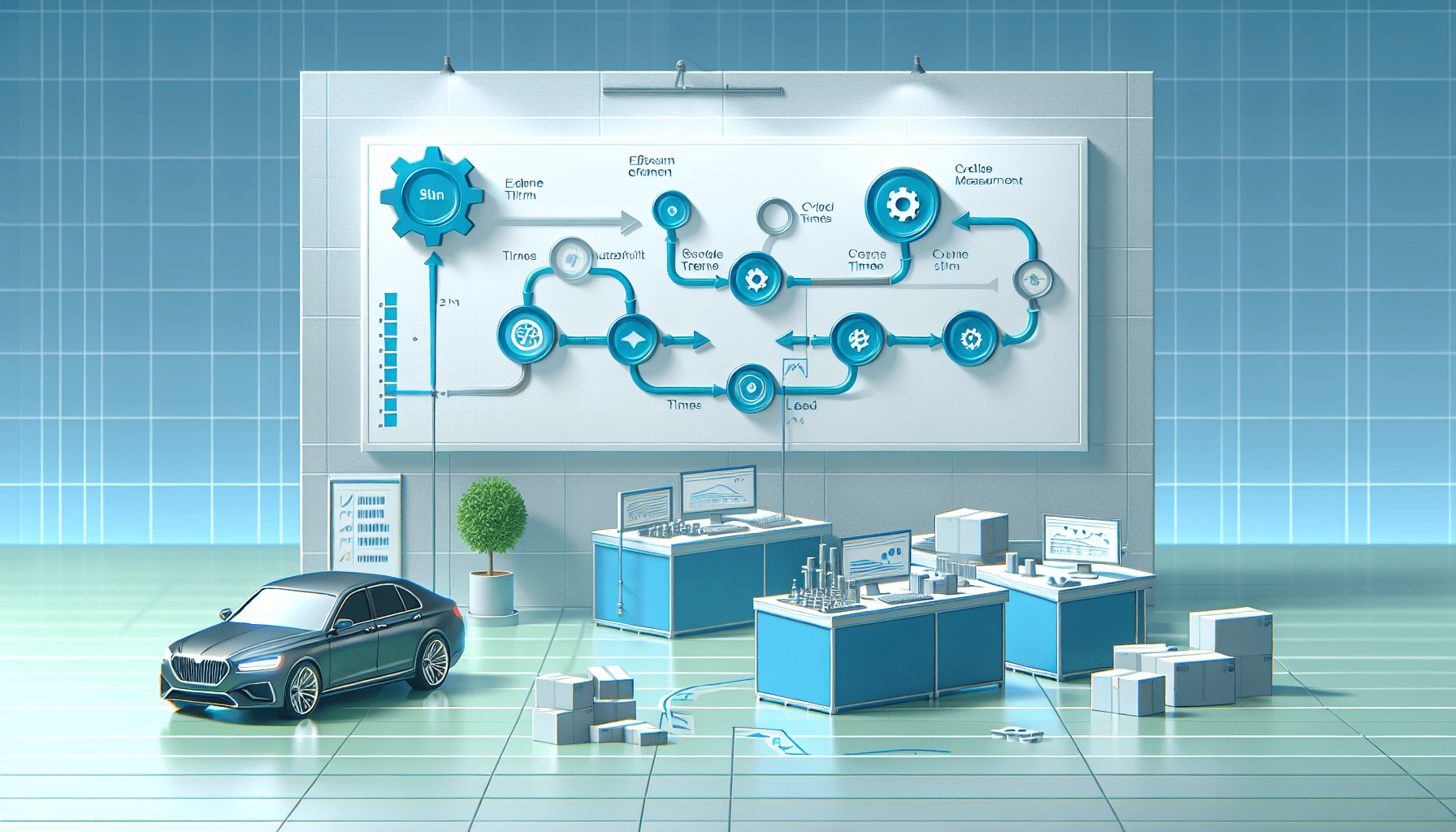If you’re feeling overwhelmed by inefficiencies in your processes, you’re not alone. Many people struggle to pinpoint exactly where things are going wrong, leading to frustration and wasted resources. It can feel like you’re trying to find a needle in a haystack!
But don’t worry; you’ve stumbled upon the right place! If you stick with me, I’ll guide you through the ins and outs of value stream mapping. This step-by-step approach will not only clarify your processes but also highlight areas for improvement – making your work smoother and more efficient.
We’ll cover everything from forming your team to implementing that shiny new future state. By the end, you’ll have a solid grip on how to streamline your workflow and make your processes shine!
Key Takeaways
Stefan’s Audio Takeaway
- Form a diverse team to define the project scope and objectives clearly.
- Identify customer pain points and related process families to tailor mapping efforts.
- Visually map the current process to uncover inefficiencies and delays.
- Collect performance data to analyze cycle times, lead times, and bottlenecks.
- Identify waste using techniques like the 5 Whys to tackle root causes.
- Create a future state map that outlines targeted improvements and efficiencies.
- Implement changes gradually, pilot testing new processes, and validate improvements with real data.
- Regularly interpret and refine the value stream map to adapt to new challenges.

How to Conduct Value Stream Mapping Step-by-Step
1. Form Your Team and Define the Project Scope
To kick off value stream mapping, gather a diverse team that understands different aspects of the process you’re analyzing.
Make sure to include people from various departments—like operations, quality, and even sales—to get a complete picture.
Once your team is set, define the project scope clearly. What process or product are you mapping, and what are your goals?
Having a set objective, whether it’s reducing cycle time or improving customer satisfaction, will keep your efforts focused.
2. Identify the Customer’s Problem and the Process Family
Next up, you need to pinpoint the customer’s pain points. What problems are they facing, and how does your process contribute to these?
Engage with your customers—surveys and direct feedback can give you valuable insights.
Also, determine the process family related to the problem. For example, if the issue lies in delivery delays, you might be looking at the logistics process family.
By understanding these aspects, you can tailor your mapping efforts to truly add value to your customer experience.
3. Observe and Map the Current Process State
The next step involves diving into the existing process and mapping it out visually. Grab some sticky notes or use digital tools—whatever works for your team.
Observe the entire process in action to get a feel for the flow. Take note of each step, cycle times, wait times, and any delays.
For instance, in the automotive industry, mapping showed wait times of 30 minutes between pressing body parts and assembly!
Your goal here is to create a “current state map” that captures every step and illuminates inefficiencies clearly.

4. Collect Relevant Process Data
Once you’ve got your current process mapped out, it’s time to gather data that will help in understanding its performance.
This involves looking at key metrics like cycle times, lead times, and anything that affects process efficiency.
For instance, in the automotive industry, it was documented that pressing takes 2 minutes per unit followed by a 30-minute wait time.
Timeline metrics can help you understand where bottle necks may be occurring.
Use digital tools to track these metrics in real-time, as they can give you more accurate data than manual methods.
This approach will allow you to analyze trends and variations over time, leading to better decision-making.
5. Analyze the Process to Identify Waste
Now, let’s roll up those sleeves because it’s time to dive into the real meat of value stream mapping: identifying waste.
Waste can come in various forms, such as excess inventory, unnecessary motion, or waiting time.
For example, in our earlier automotive case, excessive wait times between pressing and assembly were generating waste.
Use techniques like the 5 Whys to drill down to the root causes of waste. Why is there a wait? Is it lack of resources, training, or something else?
Once you identify these root causes, you can focus your efforts on eliminating them, making your process more efficient.
6. Create a Future State Map
Creating a future state map is essentially about visualizing how you want the process to look once improvements are made.
Think of it as your North Star guiding your actions moving forward.
This map should reflect minimized waste and maximized efficiency, ideally informed by the data and analysis you’ve previously gathered.
For instance, if you’ve found that cycle times in the automotive example can be reduced from 3 minutes to 2.5 minutes per unit, factor that into your future state.
Be ambitious but realistic as you create this map, outlining the desirable outcomes and necessary steps to get there.
7. Implement and Validate the Future State
Implementing your future state map isn’t just about slapping it on the wall and hoping for the best.
It’s crucial to communicate these changes to your team and get their buy-in.
Start with small pilot projects to test out your new processes, then monitor the results closely.
Are markers for success being met? For example, did your test creation cycle time actually drop as anticipated?
Validate the improvements based on real data—you might find new insights that could lead to further adjustments.
8. Interpret and Refine the Value Stream Map
Finally, interpreting the data from your value stream map allows for ongoing improvement.
Look at the new metrics you’re collecting. Are there areas still showing waste? What about customer feedback—are their experiences improving?
This is an ongoing process, not a one-time fix.
Regularly revisit your value stream map to refine and update it as necessary based on real-world conditions.
Your future state map should evolve to reflect new challenges and opportunities, keeping your process agile and customer-focused.
FAQs
Value Stream Mapping is a lean management technique used to analyze and design the flow of materials and information required to bring a product or service to a consumer. It helps identify waste and improve efficiency.
The steps include forming a team, defining project scope, identifying customer problems, mapping current processes, collecting data, analyzing waste, creating a future state map, and implementing and validating improvements.
Waste can be identified by analyzing each step of the process for non-value-adding activities, such as excess inventory, delays, or unnecessary motion. Techniques like the “7 Wastes” framework can be instrumental in this analysis.
A Future State Map visually represents the ideal process after eliminating identified wastes. It serves as a roadmap for implementing changes necessary to enhance efficiency and customer satisfaction in the workflow.
